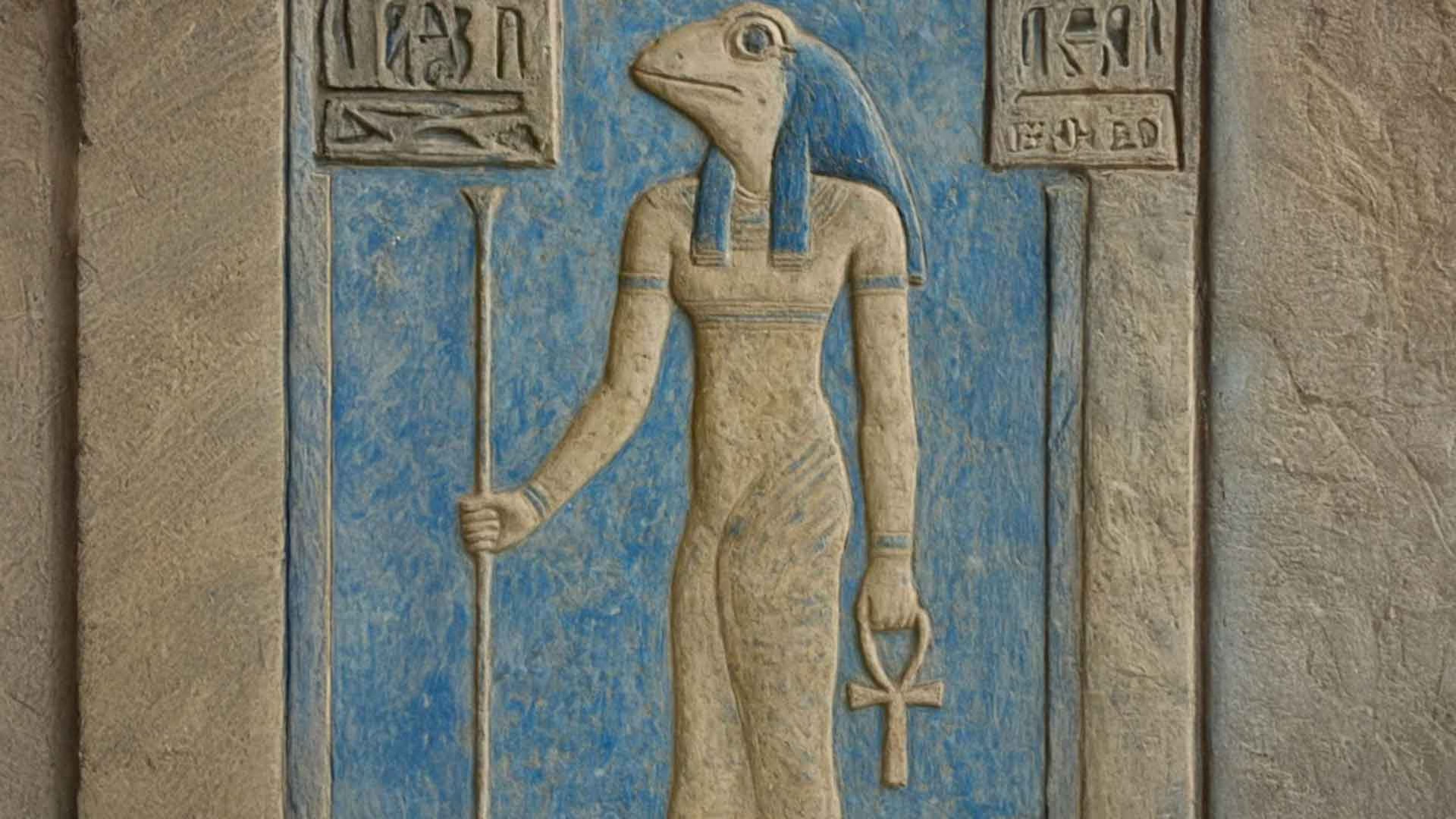Introduction
In a previous message, I noted that the plagues were not random natural disasters—they were an all-out assault on Pharaoh, his magicians, and the false gods of Egypt. Scripture later makes this explicit, with Moses writing in Deuteronomy 33:4:
“The Israelites set out from Rameses on the fifteenth day of the first month, the day after the Passover. They marched out defiantly in full view of all the Egyptians, who were burying all their firstborn—those the Lord had struck down among them; for the Lord had brought judgment on their gods.”
This week’s focus is the third plague, and like the previous ones, it demonstrates Yahweh’s absolute supremacy over Egypt’s deities. The target of His judgment this time? Heqt.
Who the heck is Heqt, and how was she rendered powerless before Yahweh? That’s the subject of this post—so stay tuned.
Some plagues reveal God’s dominance over several gods at once. For instance, the first plague struck multiple Nile deities—Hapi, Osiris, and Khnum. But in the third plague, one goddess stands directly in the crosshairs: Heqt, the frog-headed goddess of life and fertility.
The goddess Heqt: Frog of Fertility
Heqt (also spelled Heqet, Heket, or Heqtit) was among Egypt’s oldest and most recognizable deities. She was often depicted as a woman with the head of a frog, or sometimes as a frog entirely.
To the ancient Egyptian mind, this was no insult. Frogs multiplied in vast numbers from the life-giving waters of the Nile after its annual flood—making them natural symbols of fertility, renewal, and abundance.
Her name appears as Ḥqt in hieroglyphs, and she was worshiped throughout Upper Egypt. In both art and myth, Heqt embodied the power of new life—in the fields, in the river, and in the womb.
Heqt in Egyptian Literature
Heqt’s role appears throughout Egyptian religious texts:
- Pyramid Texts (Old Kingdom): She aids in resurrection and life after death.
- Middle Kingdom spells and amulets: She protects women in childbirth. Expectant mothers wore frog-shaped charms invoking her blessing.
- Westcar Papyrus: In this collection of royal tales, Heqt assists at the birth of triplet princes destined to become pharaohs—underscoring her role as a divine midwife.
Heqt was often paired with Khnum, the ram-headed god who fashioned human bodies on his potter’s wheel. As Khnum shaped each person from clay, Heqt was said to breathe life into the form—a striking image of creation and vitality.
But in the story of the plagues, the very symbols of Heqt’s power—frogs—would become the agents of Egypt’s humiliation.
When the Frogs Turned Against Egypt
The second plague (Exodus 8:1–15) is one of the myriad of ironic moments in Exodus. Yahweh turns Egypt’s symbol of life into a suffocating curse. Frogs poured out of the Nile, invading homes, ovens, and beds. The goddess of fertility and vitality became the embodiment of decay and disgust.
It was as if Yahweh were declaring:
“You revere the frog goddess who gives life? Then behold—your land will swarm with frogs until life itself becomes unbearable.”
Pharaoh’s magicians could imitate the plague, but not remove it. Only when Moses prayed did the frogs die, piling up in heaps that filled the land with stench. The smell of death was a fitting symbol of Heqt’s defeat. The one who was believed to bless birth and renew life could not even preserve her own sacred creatures.
Theological Takeaway
In Egyptian belief, Heqt’s breath animated newborns. But in biblical truth, Yahweh alone breathes life into humanity (Genesis 2:7). The plague of frogs was far more than a nuisance—it was a theological confrontation.
Through it, God declared that He alone is the Creator and Sustainer of life. Heqt’s downfall illustrates that fertility, creation, and vitality belong not to idols but to the Lord.
As Psalm 135:15–18 reminds us:
“The idols of the nations are silver and gold, made by human hands.
They have mouths, but cannot speak, eyes, but cannot see…
Those who make them will be like them, and so will all who trust in them.”
Conclusion
So, who the heck is Heqt?
She was Egypt’s frog-headed goddess of fertility and childbirth—celebrated as the giver of life. Yet before the power of Yahweh, she was exposed as lifeless clay, powerless to save even her own image.
The plague narrative reminds us of the same truth proclaimed throughout Scripture:
“There is none like Yahweh our God.” — Exodus 8:10

